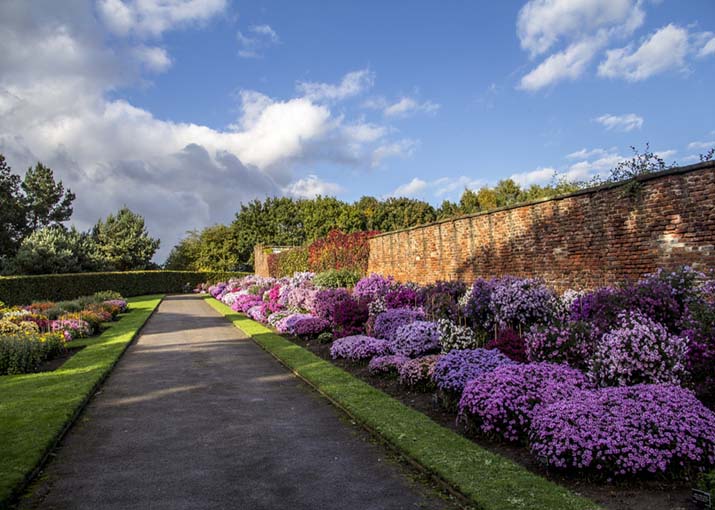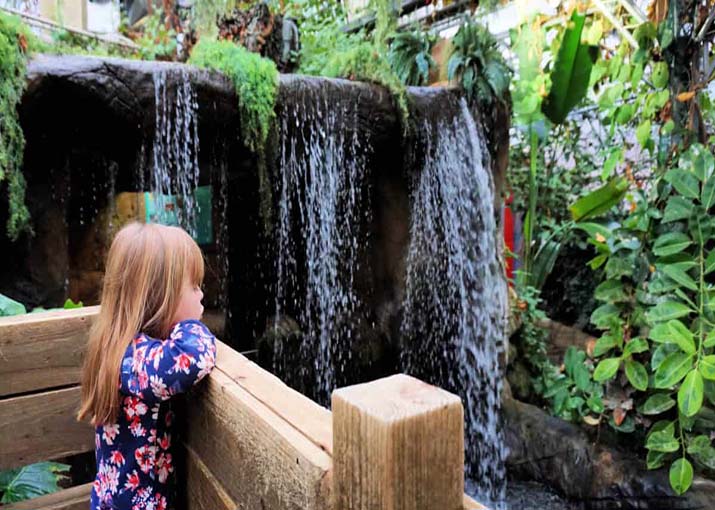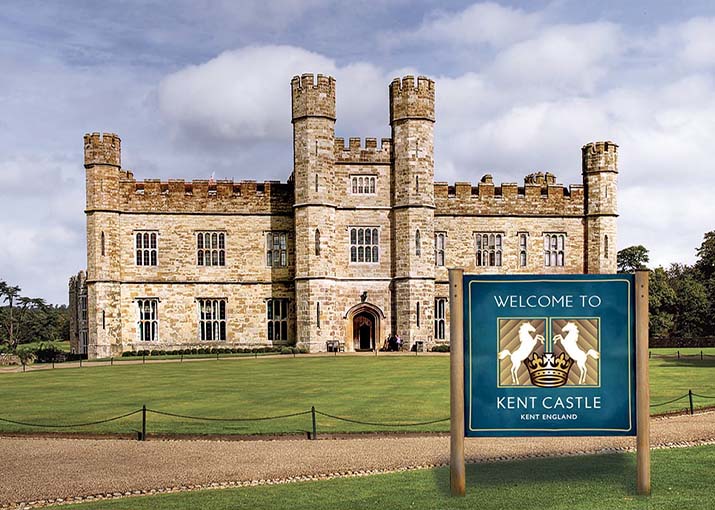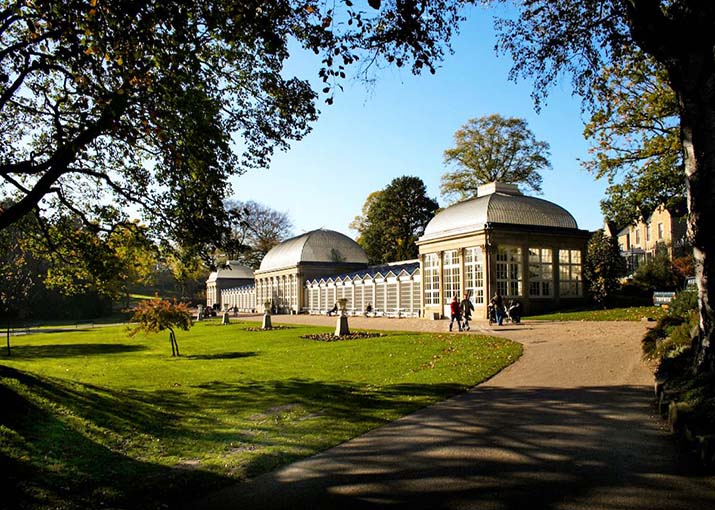Welcome to Leeds, a city rich in history and culture, where ancient ruins and modern marvels coexist harmoniously. Whether you’re a history buff or simply curious about the past, Leeds offers an array of historical treasures waiting to be explored. Join me on a journey through some of Leeds’ most fascinating historical sites, including Leeds Castle and the Royal Armouries Museum, and discover practical tips to make the most of your visit.
Leeds Castle: A Journey Through Time
A Brief History
Despite the common misconception, Leeds Castle is not located in the city of Leeds but rather in Kent. However, Leeds, West Yorkshire, boasts its own historical landmarks and sites that offer a glimpse into the region’s rich past. To avoid confusion, let’s focus on the treasures within Leeds itself.
Kirkstall Abbey: A Medieval Marvel
Historical Significance
Kirkstall Abbey, founded in 1152, is a stunning example of Cistercian architecture and one of the most well-preserved medieval abbeys in England. Nestled on the banks of the River Aire, the abbey provides a serene retreat from the bustling city and offers visitors a chance to step back in time.
Visitor Experience
Upon arriving at Kirkstall Abbey, you’ll be struck by the grandeur of its ruins. The towering stone arches, intricate carvings, and expansive grounds make for a captivating exploration. As you wander through the remains of the church, cloisters, and chapter house, you’ll gain insight into the daily lives of the monks who once called this place home.
Getting There
Kirkstall Abbey is easily accessible from Leeds city center. You can take a short bus ride (buses 33 and 34 from Leeds Bus Station) or enjoy a scenic walk or bike ride along the Leeds-Liverpool Canal. The abbey is located about 3 miles from the city center, making it a convenient destination for a half-day trip.
Tips for Visitors
- Visit Early: To avoid crowds and enjoy a peaceful experience, try to visit early in the day.
- Pack a Picnic: The abbey grounds are perfect for a leisurely picnic, especially on a sunny day.
- Audio Guides: Make use of the audio guides available at the site to enrich your understanding of the abbey’s history.
Leeds City Museum: Unveiling the Past
A Brief History
Located in Millennium Square, Leeds City Museum is a treasure trove of exhibits that showcase the city’s history from prehistoric times to the modern era. The museum’s impressive collections and interactive displays make it a must-visit for anyone interested in Leeds’ past.
Visitor Experience
As you enter Leeds City Museum, you’ll be greeted by the imposing Leeds Tiger, a taxidermy marvel that has fascinated visitors for generations. The museum’s galleries are divided into different themes, each offering a unique glimpse into various aspects of history.
- The Leeds Story Gallery: This gallery takes you on a journey through the history of Leeds, from its origins as a small market town to its rise as a bustling industrial city.
- Ancient Worlds Gallery: Here, you’ll find fascinating artifacts from ancient civilizations, including the Egyptian mummy Nesyamun.
- Life on Earth Gallery: This gallery showcases natural history exhibits, including fossils and taxidermy specimens.
Getting There
Leeds City Museum is conveniently located in the heart of the city. From Leeds train station, it’s a pleasant 10-minute walk through the city center. Alternatively, you can take a bus to Millennium Square.
Tips for Visitors
- Plan Your Visit: Check the museum’s website for information on temporary exhibitions and events.
- Interactive Displays: Take advantage of the interactive exhibits to engage with history in a hands-on way.
- Free Entry: The museum offers free admission, making it an accessible and budget-friendly attraction.
The Royal Armouries Museum: A Glimpse into Warfare
A Brief History
The Royal Armouries Museum, located at Clarence Dock, is home to one of the world’s largest collections of arms and armor. The museum’s exhibits cover a wide range of historical periods and cultures, offering a comprehensive look at the evolution of warfare.
Visitor Experience
A visit to the Royal Armouries Museum is a journey through the history of combat and defense. The museum is divided into themed galleries, each focusing on a different aspect of arms and armor.
- The War Gallery: This gallery showcases weapons and armor from various historical periods, including medieval, Renaissance, and modern warfare.
- The Tournament Gallery: Here, you’ll find displays dedicated to jousting and tournaments, complete with armor and weapons used in these medieval competitions.
- The Oriental Gallery: This gallery features arms and armor from Asia, including samurai swords and ornate armor.
One of the highlights of the museum is the live demonstrations and reenactments. Watching knights in armor engage in jousting tournaments or witnessing the firing of historical firearms brings history to life in a vivid and exciting way.
Getting There
The Royal Armouries Museum is easily accessible from Leeds city center. You can take a water taxi from Granary Wharf, which offers a unique and scenic way to reach the museum. Alternatively, a short bus ride or a pleasant walk along the canal will also get you there.
Tips for Visitors
- Check the Schedule: Be sure to check the museum’s schedule for live demonstrations and special events.
- Interactive Exhibits: Don’t miss the interactive exhibits where you can try on replica armor and handle historical weapons.
- Allow Plenty of Time: With so much to see and do, plan to spend several hours exploring the museum.
Thwaite Mills: Industrial Heritage
A Brief History
Thwaite Mills is a fully restored 19th-century water-powered mill located on an island in the River Aire. The mill played a significant role in Leeds’ industrial history and now serves as a fascinating museum dedicated to this era.
Visitor Experience
Visiting Thwaite Mills is like stepping back into the industrial revolution. The museum offers guided tours that explain the workings of the mill and its impact on the local economy. You can explore the mill’s machinery, see the waterwheel in action, and learn about the lives of the workers who kept the mill running.
The surrounding nature reserve provides a peaceful contrast to the industrial setting, with opportunities for birdwatching and enjoying the scenic riverside.
Getting There
Thwaite Mills is located about 2 miles from Leeds city center. You can reach it by taking a bus from the city center (buses 410 and 189) or by cycling along the National Cycle Route 67.
Tips for Visitors
- Guided Tours: Take advantage of the guided tours to gain a deeper understanding of the mill’s history and operations.
- Family-Friendly: Thwaite Mills is a great destination for families, with interactive exhibits and plenty of space for kids to explore.
- Nature Walks: After your visit, take a walk through the nature reserve to enjoy the tranquil surroundings.
Temple Newsam: A Stately Home and Gardens

A Brief History
Temple Newsam is a magnificent Tudor-Jacobean mansion set within beautiful parkland. The estate, which dates back to the 16th century, has been home to many notable families and now operates as a museum and art gallery.
Visitor Experience
Exploring Temple Newsam offers a glimpse into the opulent lifestyle of the aristocracy. The house is filled with period furnishings, fine art, and decorative arts. Highlights include the grand state rooms, the library, and the impressive collection of furniture and ceramics.
The surrounding gardens and parkland provide a picturesque setting for a leisurely stroll. The estate includes formal gardens, woodland walks, and a working farm that is popular with families.
Getting There
Temple Newsam is located about 4 miles east of Leeds city center. You can reach it by taking a bus from the city center (buses 19 and 19A) or by driving, with ample parking available on-site.
Tips for Visitors
- Check Opening Times: Temple Newsam has seasonal opening hours, so check their website before your visit.
- Pack a Picnic: The extensive grounds are perfect for a picnic, especially during the warmer months.
- Family Activities: The working farm and gardens offer plenty of activities for children, making it a great family outing.
Abbey House Museum: Life in Victorian Leeds
A Brief History
Located near Kirkstall Abbey, Abbey House Museum offers a fascinating look at Victorian life in Leeds. The museum is housed in the former gatehouse of the abbey and features reconstructed Victorian streets, shops, and houses.
Visitor Experience
Stepping into Abbey House Museum is like traveling back to the 19th century. The recreated Victorian streets are incredibly detailed, with period-appropriate shops, including a sweet shop, a pub, and a blacksmith’s forge. Visitors can learn about daily life in Victorian Leeds, from domestic chores to public entertainment.
The museum also hosts temporary exhibitions and events that delve into various aspects of Victorian culture and history.
Getting There
Abbey House Museum is located next to Kirkstall Abbey, making it convenient to visit both sites in one trip. You can take a bus from Leeds city center (buses 33 and 34) or enjoy a scenic walk or bike ride along the Leeds-Liverpool Canal.
Tips for Visitors
- Interactive Exhibits: Engage with the interactive exhibits to get a hands-on understanding of Victorian life.
- Family-Friendly: The museum is very family-friendly, with activities and exhibits designed for children.
- Combined Visit: Plan to visit both Abbey House Museum and Kirkstall Abbey for a full day of historical exploration.
Roundhay Park and Tropical World

A Brief History
Roundhay Park is one of the largest city parks in Europe, covering over 700 acres of parkland, lakes, woodland, and gardens. Within the park, you’ll find
Tropical World, a popular attraction featuring exotic plants and animals.
Visitor Experience
Roundhay Park offers a variety of attractions and activities for visitors of all ages. You can explore the beautiful gardens, take a leisurely stroll around the lakes, or enjoy a picnic in one of the many scenic spots.
Tropical World, located within the park, is a must-visit for nature lovers. It features a series of glasshouses that recreate different environments, from rainforests to deserts. Visitors can see a wide range of exotic animals, including butterflies, birds, reptiles, and meerkats.
Getting There
Roundhay Park is located about 3 miles north of Leeds city center. You can reach it by taking a bus from the city center (buses 12 and 2) or by driving, with ample parking available on-site.
Tips for Visitors
- Visit Early: To avoid crowds, especially in Tropical World, try to visit early in the day.
- Wear Comfortable Shoes: With so much ground to cover, comfortable footwear is a must.
- Seasonal Events: Check the park’s website for information on seasonal events and activities.
Armley Mills: Leeds Industrial Museum
A Brief History
Armley Mills, once the world’s largest woolen mill, now serves as the Leeds Industrial Museum. The museum offers a fascinating look at the city’s industrial heritage, with exhibits on textiles, engineering, and locomotives.
Visitor Experience
Exploring Armley Mills provides insight into the industrial revolution and its impact on Leeds. The museum’s exhibits include working textile machinery, steam engines, and a collection of early cinema equipment. Visitors can learn about the mill’s history, the lives of its workers, and the technological advancements that shaped the industry.
The museum also hosts temporary exhibitions and events that highlight various aspects of industrial history.
Getting There
Armley Mills is located about 2 miles west of Leeds city center. You can reach it by taking a bus from the city center (buses 15 and 33) or by driving, with parking available on-site.
Tips for Visitors
- Interactive Exhibits: Take advantage of the interactive exhibits to see the machinery in action.
- Family-Friendly: The museum is suitable for families, with activities and exhibits designed for children.
- Combined Visit: Combine your visit with a trip to nearby Kirkstall Abbey for a full day of historical exploration.
Leeds is a city steeped in history, with a wealth of fascinating sites that offer a glimpse into its rich past. From the medieval splendor of Kirkstall Abbey to the industrial heritage of Armley Mills, there is something for everyone to explore and enjoy.
Whether you’re wandering through the ruins of an ancient abbey, marveling at the arms and armor in the Royal Armouries Museum, or strolling through the Victorian streets of Abbey House Museum, each site provides a unique and enriching experience.
Remember to check the opening times and any special events before your visit, and take advantage of the practical tips provided to make the most of your historical journey through Leeds. Happy exploring!



